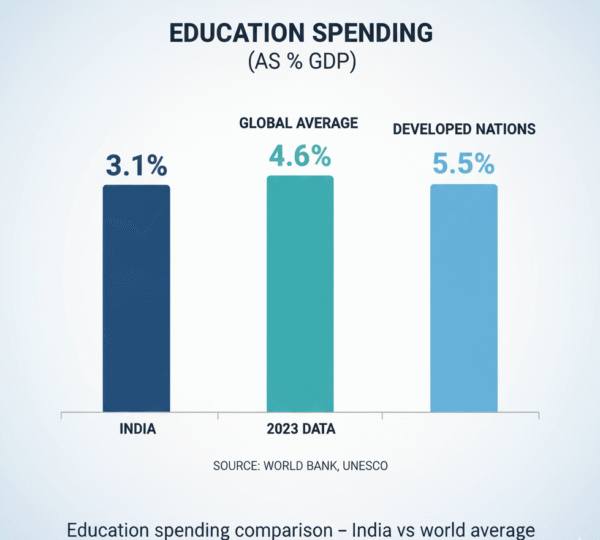Introduction: A Growing System, Lagging Quality
India is home to the world’s second-largest higher education system, with over 700 universities and 35,000 colleges. Despite this vast network, concerns persist about education quality, research output, and global competitiveness.
Compared to international standards, India’s universities continue to struggle in infrastructure, faculty quality, innovation, and rankings.
🏫 Key Challenges in Higher Education Quality
1. Lack of Funding & Infrastructure
India spends only 1.2% of its GDP on higher education, far below the global average of 4.5%.
This funding gap leads to:
Outdated labs and classrooms
Poor library and digital access
Limited hostel and campus facilities
2. Faculty Shortage and Overload
Many Indian universities face faculty shortages and high student-teacher ratios—often 20:1 or higher, compared to 10:1 in world-class universities.
Low salaries and heavy teaching loads discourage research and innovation, weakening academic excellence.
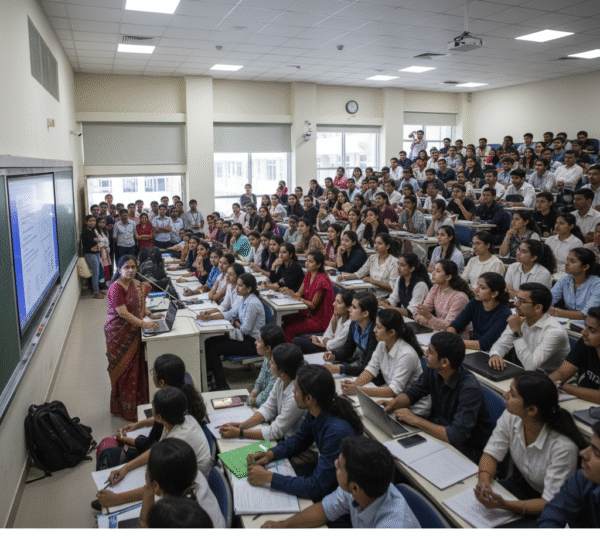
3. Weak Research Output
India’s contribution to global academic research remains low.
In 2017, Indian universities published 27,000 papers, compared to China’s 136,000.
No Indian university ranks in the top 200 for research impact.
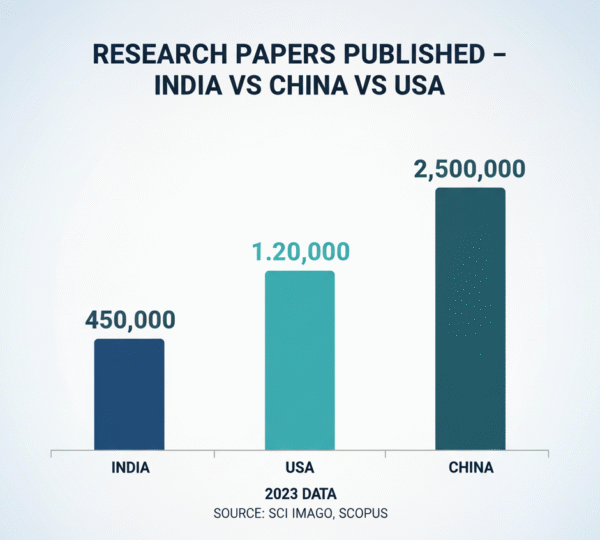
4. Poor International Rankings
Only two Indian institutions—IITs and IISc Bangalore—ranked in the top 200 of QS World University Rankings 2020, with IISc placed 172nd.
This reflects the urgent need for quality reforms and global academic integration.
🇮🇳 Government Reforms & Recent Initiatives
To address these challenges, the Government of India has launched several major initiatives:
| Initiative | Objective | Key Impact |
|---|---|---|
| NEP 2020 | Increase education spending to 6% of GDP and allow foreign campuses | Expand access and global competitiveness |
| Institutes of Eminence (IoE) | Autonomy and funding to elite institutions | Boost global rankings |
| HEFA (2018) | Low-cost infrastructure financing | Campus modernization |
| PMRF, IMPRINT, UAY | Research funding and innovation support | Enhanced R&D quality |
| Digital India Programs (DIKSHA, NDL, e-Pathshala) | E-learning resources | Digital inclusion |
| Foreign Collaborations | Partnerships with US, UK, Australia, Japan | Academic exchange and innovation |
| Private Investment Policies | Liberalized norms | Encourage private sector entry |
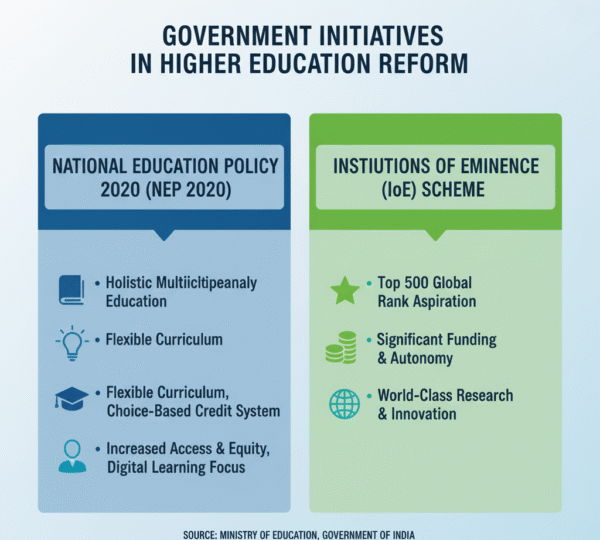
🎯 Can India Reach 50% GER by 2035?
The National Education Policy (NEP) 2020 targets a 50% Gross Enrollment Ratio (GER) by 2035, up from 27.2% (2020).
However, India faces challenges such as:
Limited faculty and institutions
High dropout rates
Access gaps in rural areas
Massive funding needs (₹1 lakh crore+)
A gradual increase of 5–10% in GER over five years may be more achievable with sustained reforms.
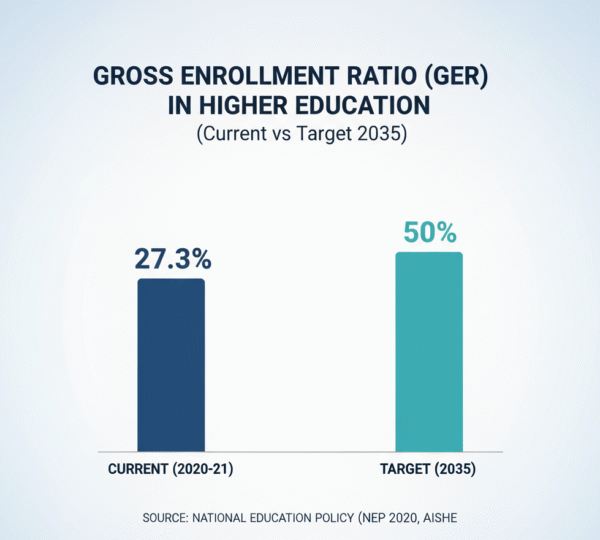
💰 Will 6% of GDP Investment Be Enough?
Raising education funding to 6% of GDP could be transformative if supported by systemic reforms.
Benefits include:
Better infrastructure and facilities
Improved faculty recruitment and pay
Scholarships for underprivileged groups
Stronger research and innovation ecosystem
However, this must go hand in hand with:
✅ Governance reform
✅ Public-private partnerships
✅ Curriculum modernization
✅ Technology integration
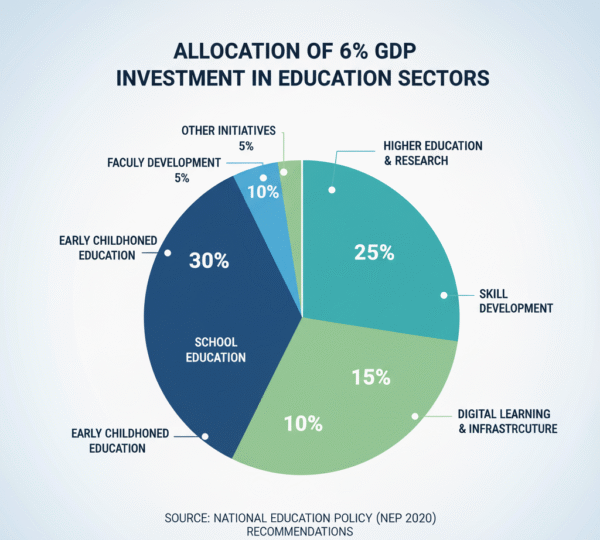
🔍 Recommendations for Improving Quality
Increase funding to 6% of GDP for infrastructure and research.
Grant autonomy to high-performing institutions.
Upgrade curriculum to make it skill-based and industry-relevant.
Promote international collaborations and exchange programs.
Support faculty development through training and incentives.
Leverage digital learning tools for nationwide access.
Strengthen research ecosystems with grants and innovation hubs.
Enhance employability through incubation and placement support.
Encourage private and foreign universities with transparent regulation.
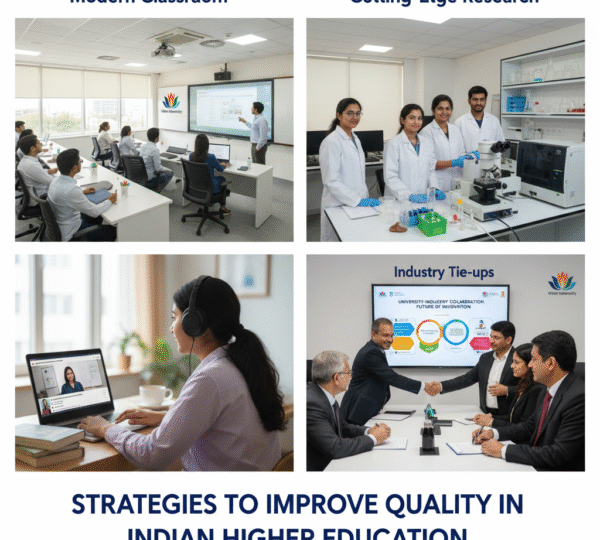
🧭 Conclusion: The Road to World-Class Education
India’s higher education system stands at a turning point.
To transform into a global leader in knowledge and innovation, the country must combine sustained investment, bold reforms, and international collaboration.
With the right policy execution, India can build world-class universities, empower its youth, and realize its vision of a knowledge-driven economy.
higher education in India, NEP 2020, Indian universities, Institutes of Eminence, higher education reforms, education funding India, research output India, GER 2035, QS world rankings, government initiatives in education.








